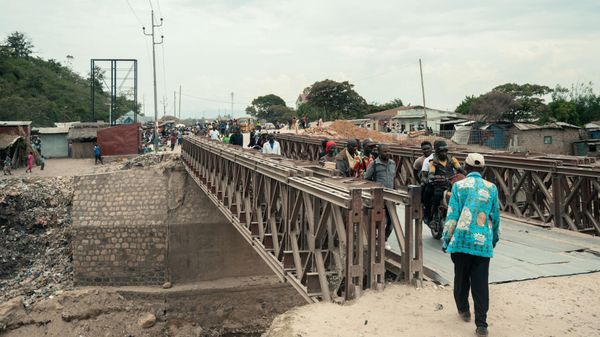Archaeologists have unravelled the “murder mystery” of a teenage girl buried 2,000 years ago at an Iron Age settlement in Dorset during filming of a new Channel 4 television series unearthing secrets from Britain’s past.
While filming the first episode of her show “Hidden Wonders”, TV personality Sandi Toksvig and Bournemouth University archaeologist Miles Russell discovered the domestic dwellings and the cemetery of a tribe called the Durotriges, who lived in rural Dorset before the Romans.
In one section of the site, researchers discovered the skeleton of a teenage girl buried face down in a pit.
Further analysis revealed that the teen suffered damage to her arms and upper torso, possibly from acts of violence before death. Since burying someone face down wasn’t a usual practice at the time, and as the deceased was placed with care in the grave, researchers suspect the teen was likely murdered as a human sacrifice.
“I turned the face at last to the light and it felt like the person was looking at me...At that moment, I unexpectedly burst into tears,” the presenter told Metro.
“I could not stop crying. To hold that person’s head in my hands was one of the greatest privileges of my life,” she said.
“The team were particularly shocked to hear that this could have been a human sacrifice, but it was obvious from Sandi’s own interest in Archaeology that she was deeply moved by what had been uncovered,” Dr Russell said.
The remains were handled “very carefully”, Ms Toksvig says. Nearly 40 years after graduating with a degree in Archaeology and Anthropology from the University of Cambridge, Ms Toksvig would be presenting discoveries from four sites.
The evidence unearthed at the site shed light on the tribe, their rituals, and the kinds of tools and implements they made.
“The finds were often in a Roman style, demonstrating a blend between Roman and traditional Iron Age customs, helping us to build up a picture of the how these people lived and died 2,000 years ago,” said Dr Russell, an archaeologist from Bournemouth University who was part of the excavations.
DNA analysis of samples from the burial site hints that the Iron Age Durotriges tribe were a matriarchal society.
In this tribe, women likely owned the land, with the men deriving from several locations around Britain and northwest Europe, researchers say.
Archaeologists could also use DNA evidence to track the tribal lineage to a single woman.
Evidence so far suggests the communities were centred around the mothers of families, and the men were invited to live with women, researchers say.
“It marks the first time that evidence of matrilineal communities have been documented in western European prehistory,” Dr Russell said.
Archaeological site in Alaska that casts light on early Yup'ik life ravaged by ex-Typhoon Halong
New study of fossilized bones rewrites history of early human ancestors
Channel 4 airs first ever AI-generated TV presenter
British TV show claims to be the first to use AI presenter
Groundbreaking new method could lead to earlier detection of Alzheimer’s
Rapidly adapting sea creatures found in Japan’s deepest ‘Ring of Fire’ trenches







